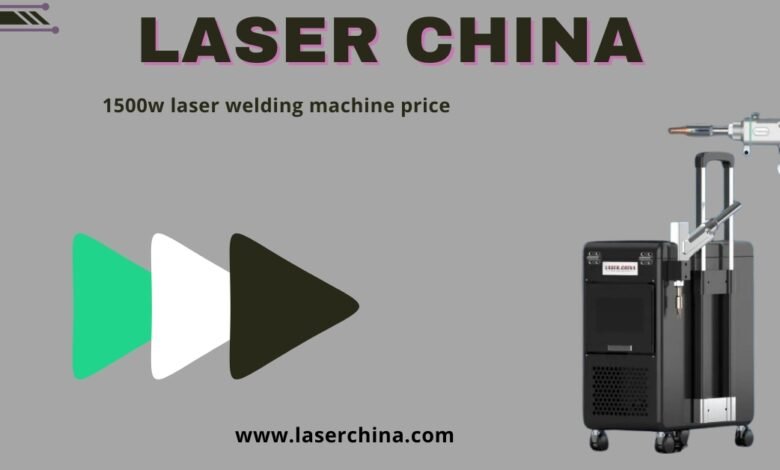What is a portable laser cleaning machine and how does it benefit industrial applications
portable laser cleaning machine

A portable laser cleaning machine is a compact and mobile device used to remove contaminants such as rust, paint, oil, and oxide layers from metal surfaces using laser technology. Unlike traditional cleaning methods, which may involve chemical solvents, abrasive materials, or high-pressure washing, a portable laser cleaner uses focused laser light to precisely clean surfaces without physical contact. This innovation is transforming industries by offering a highly efficient, precise, and environmentally friendly alternative for cleaning various types of metal and other materials.
How It Works
Portable laser cleaning machines operate by emitting a powerful laser beam onto the contaminated surface. The laser beam, typically from a fiber or diode laser, targets the rust, paint, or other contaminants, rapidly heating them up. This causes the unwanted material to either vaporize or detach from the surface, leaving the underlying material intact. The laser works through a process called laser ablation, where the contaminants absorb the laser’s energy more efficiently than the metal or material beneath, ensuring a selective cleaning process.
A key feature of portable laser cleaning systems is their flexibility and mobility. These machines are designed to be lightweight and compact, allowing users to move them easily from one job site to another or work on large objects directly in place. Some models include a handheld unit with a fiber optic cable that delivers the laser to the cleaning surface, while others may feature robotic arms for automated or precise cleaning tasks.
Applications of Portable Laser Cleaning Machines
Portable laser cleaning machines have wide-ranging applications across various industries. Some of the primary sectors where these machines are used include:
- Automotive Industry: Portable laser cleaners are used to remove rust, grease, and paint from automotive components, such as engine parts, chassis, and wheels. Their precision allows for the cleaning of delicate parts without damaging the underlying metal, which is especially important when preparing surfaces for painting, welding, or coating.
- Aerospace: The aerospace industry uses portable laser cleaners to remove corrosion, paint, and oxidation from sensitive components like turbine blades, aircraft parts, and engine components. The ability to clean parts without physical contact ensures that intricate components are not damaged during the cleaning process, maintaining their integrity and functionality.
- Construction and Heavy Equipment: Portable laser cleaners are used on construction sites to clean steel beams, cranes, and other heavy equipment exposed to corrosion and wear. Since these machines can be easily transported and set up on-site, they allow for efficient rust removal without having to move large equipment to a centralized cleaning facility.
- Marine Industry: Ships and offshore platforms are subject to corrosion from saltwater exposure. Portable laser cleaners are used to clean the metal surfaces of ships, oil rigs, and other marine structures, preventing further damage and extending their lifespan. These machines are ideal for in-situ cleaning, reducing downtime and the need for transporting large parts.
- Art Restoration: In addition to industrial uses, portable laser cleaners are also employed in the restoration of historical monuments and art. The precise nature of laser cleaning allows conservators to remove rust and dirt from delicate sculptures and artifacts without harming the underlying material.
Benefits of Portable Laser Cleaning Machines
- Portability and Flexibility: As the name suggests, portability is one of the key advantages of these cleaning machines. Traditional cleaning methods often require the movement of heavy equipment or large parts to a centralized cleaning area. With a portable laser cleaner, the machine can be brought directly to the worksite, reducing the need for transporting large components and minimizing downtime.
- Precision and Selectivity: Laser cleaning is highly precise, allowing operators to clean only the contaminated areas without affecting the underlying surface. This is particularly useful when dealing with sensitive materials or parts that require careful handling, such as automotive and aerospace components.
- Environmental Benefits: Unlike chemical cleaning methods, which often involve toxic solvents and produce hazardous waste, portable laser cleaning machines operate without the need for chemicals, abrasive materials, or water. This makes the process environmentally friendly and reduces the overall waste produced during cleaning operations.
- Non-Abrasive Cleaning: Portable laser cleaners are non-abrasive, meaning they do not wear down or scratch the surface being cleaned. Traditional abrasive cleaning methods, such as sandblasting, can cause damage to the metal or material beneath the contaminants. Laser cleaning, on the other hand, ensures that the underlying surface remains intact, preserving its integrity.
- Cost-Effective: While the initial investment in a portable laser cleaning machine may be higher than traditional cleaning methods, the long-term savings in terms of labor, chemicals, and maintenance can make it a more cost-effective solution. The machine’s durability and low maintenance requirements also contribute to reduced operating costs.
- Increased Productivity: Portable laser cleaning machines are fast and efficient, capable of cleaning large areas in a short amount of time. This increases productivity, especially in industrial settings where time is critical. Additionally, the ability to clean parts on-site means that work can continue without the need for lengthy setup or transportation delays.
- Safety: Traditional cleaning methods can pose safety risks, especially when using hazardous chemicals or high-pressure systems. Portable laser cleaning machines are safer to operate since they do not involve harmful chemicals or abrasive materials. Additionally, many models are designed with built-in safety features, such as laser shields and remote operation, reducing the risk to operators.
Factors to Consider Before Purchasing a Portable Laser Cleaning Machine
- Power and Output: The power output of the laser cleaner is an important consideration when selecting a machine. Higher power units can clean larger areas and handle tougher contaminants, but may be unnecessary for smaller or more delicate tasks. It’s essential to choose a machine that matches the specific needs of the job.
- Size and Mobility: Depending on the work environment, consider the size and weight of the machine. Some portable laser cleaners are designed to be lightweight and compact for easy transport, while others may offer more power but require a larger setup.
- Ease of Use: User-friendly controls and interfaces are crucial for maximizing the efficiency of the machine. Look for models with intuitive controls, clear instructions, and easy-to-handle components.
- Maintenance and Support: It’s important to choose a portable laser cleaning machine from a reputable manufacturer that offers reliable customer support and maintenance services. Ensuring that spare parts and technical support are available will help minimize downtime and extend the life of the machine.
Conclusion
A portable laser cleaning machine is a valuable investment for industries looking for a precise, efficient, and environmentally friendly cleaning solution. Its mobility, precision, and minimal impact on the environment make it ideal for a wide range of applications, from automotive and aerospace to marine and art restoration. By considering factors such as power, size, and ease of use, businesses can choose the right portable laser cleaning system to improve their cleaning processes, reduce downtime, and increase overall efficiency.


